An Introduction to Artistic Fraud of Newfoundland
Jillian KeileyRobert Chafe
An extract from a presentation given by Jillian Keiley and Robert Chafe on 26 March 2004 as part of the Shifting Tides: Atlantic Canadian Theatre Yesterday, Today, and Tomorrow Conference held at the Graduate Centre for Study of Drama, University of Toronto.
J: Since our inception, Artistic Fraud of Newfoundland has
been developing a mathematically based choreography and
directing system in order to produce very specific movement and sound instances on stage, like symphonic music
but created with an actor’s speaking voice, natural movement, technical elements and blocking. We call this device
Kaleidography.
R: If for no other reason than to avoid continuously repeating the preceding long-winded sentence.
J: Kaleidography involves the pre-rehearsal charting of instances of staging.
R: This charting can be accomplished in many forms including music notation.
Score for The Cheat (1996) by Jillian Keiley.
R: Grid diagrams.
Grid for Jesus Christ Superstar (1998) by Jillian Keiley.
Grid for Icycle (2001) by Jillian Keiley.
J: And while one of our Kaleidographic scripts will probably never get published.
Fugue Text for Fear of Flying (2006) by Jillian Keiley.
Robert Chafe pursued for an interview. Photo by Robert Chafe (sort of).
J: Over the years we have cultivated a highly skilled group of performers who have become adept at interpreting these charts that look like the devil’s own hieroglyphics to the untrained eye.
Fear of Flight (2005). "Bride" played by Holly Rolfe. Photo by John James.
Under Wraps (1997, 2000). "David" played by Steve Cochrane, "Mark" played by Robert Chafe. Photo by Marni Burkhardt.
R: The challenge was to integrate our timing system with text, grid blocking, music, lighting, and a full chorus.
J: Eighteen brave actors were to move around the set concealed by a 40 x 60 foot parachute cloth. These actors under the cloth were strictly choreographed to arrive and position themselves on precisely marked areas on the stage using a grid system.
J: The two actors on top of the sheet were also precisely directed and their blocking, like The Cheat [see Image 8], harmonized with the blocking of the actors under the cloth.
R: Well, myself and Steve, Steve Cochrane here, on top of the sheet couldn’t see exactly where they were under the sheet, and those under the sheet couldn’t see at all where we were, or even where the other chorus members were most times, so the timing of all the events on stage was critical.
Under Wraps (1997, 2000). "Mark" played by Robert Chafe. Photo by Marni Burkhardt.
Under Wraps (1997, 2000). "David" played by Steve Cochrane, "Mark" played by Robert Chafe. Photo by Marni Burkhardt.
R: We learned how to integrate our chorus so that the speaking actors could have natural sounding dialogue with a group that was singing the other half of the conversation.
J: We learned how to place text in the music, so the actor understood the exact timing and placement of each line, by working months before the rehearsal was on its feet learning the lines to a click track.
Score for Under Wraps (1997). by Petrina Bromley.
J: Under Wraps opened in February of 1997 in St. John’s, and toured to Halifax, Calgary, Banff, and Vancouver.
R: If for no other reason than to avoid continuously repeating the preceding long-winded sentence.
J: Kaleidography involves the pre-rehearsal charting of instances of staging.
R: This charting can be accomplished in many forms including music notation.
Score for The Cheat (1996) by Jillian Keiley.
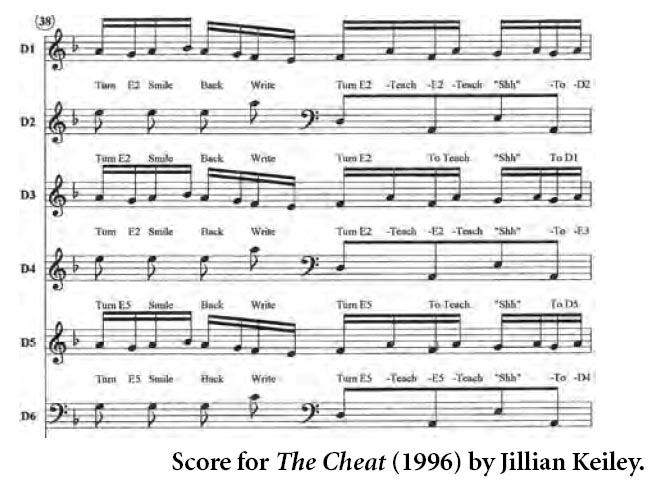
Display large image of Figure 1

Display large image of Figure 2
R: Grid diagrams.
Grid for Jesus Christ Superstar (1998) by Jillian Keiley.
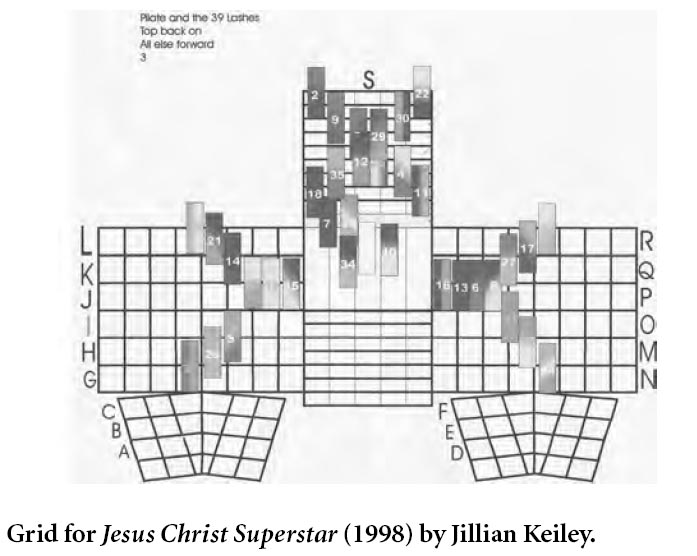
Display large image of Figure 3
Grid for Icycle (2001) by Jillian Keiley.

Display large image of Figure 4
J: And while one of our Kaleidographic scripts will probably never get published.
Fugue Text for Fear of Flying (2006) by Jillian Keiley.
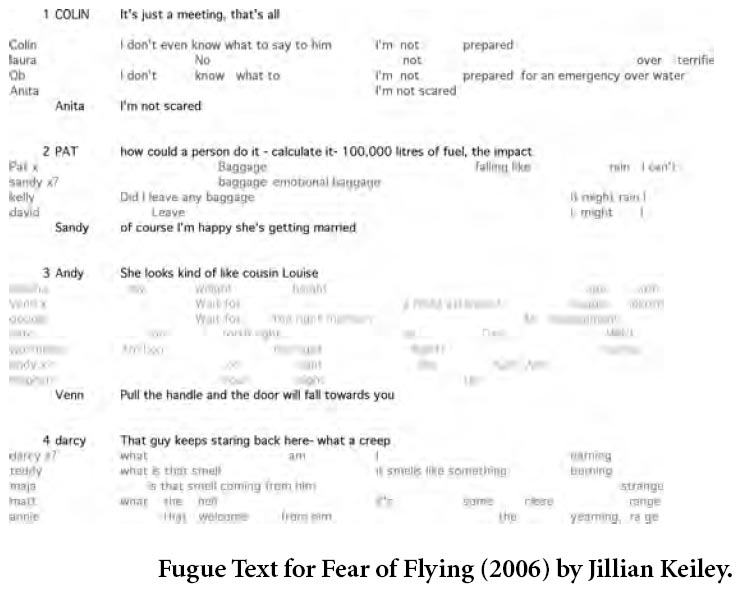
Display large image of Figure 5
Robert Chafe pursued for an interview. Photo by Robert Chafe (sort of).
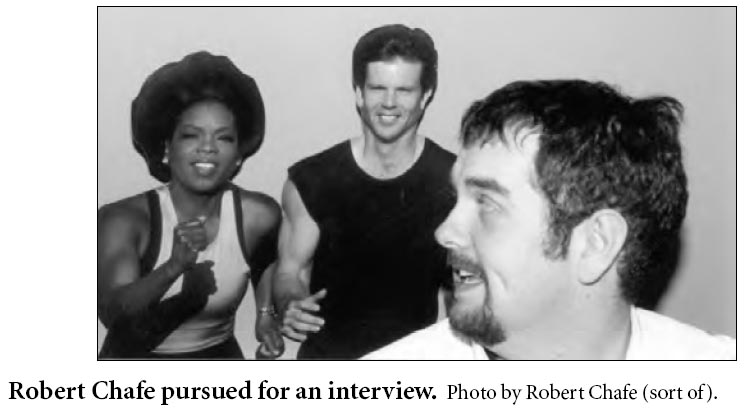
Display large image of Figure 6
J: Over the years we have cultivated a highly skilled group of performers who have become adept at interpreting these charts that look like the devil’s own hieroglyphics to the untrained eye.
Fear of Flight (2005). "Bride" played by Holly Rolfe. Photo by John James.

Display large image of Figure 7

Display large image of Figure 8
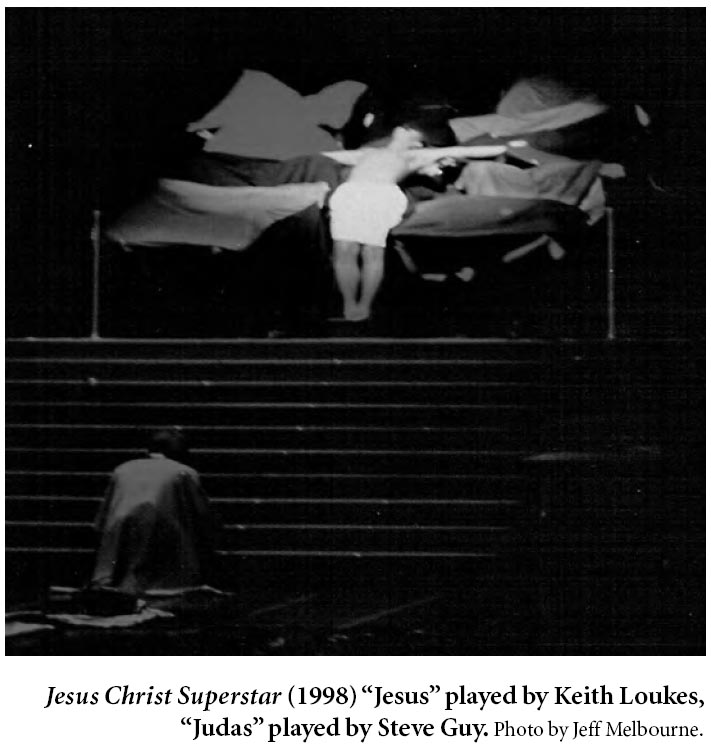
Display large image of Figure 9
Under Wraps (1997, 2000). "David" played by Steve Cochrane, "Mark" played by Robert Chafe. Photo by Marni Burkhardt.
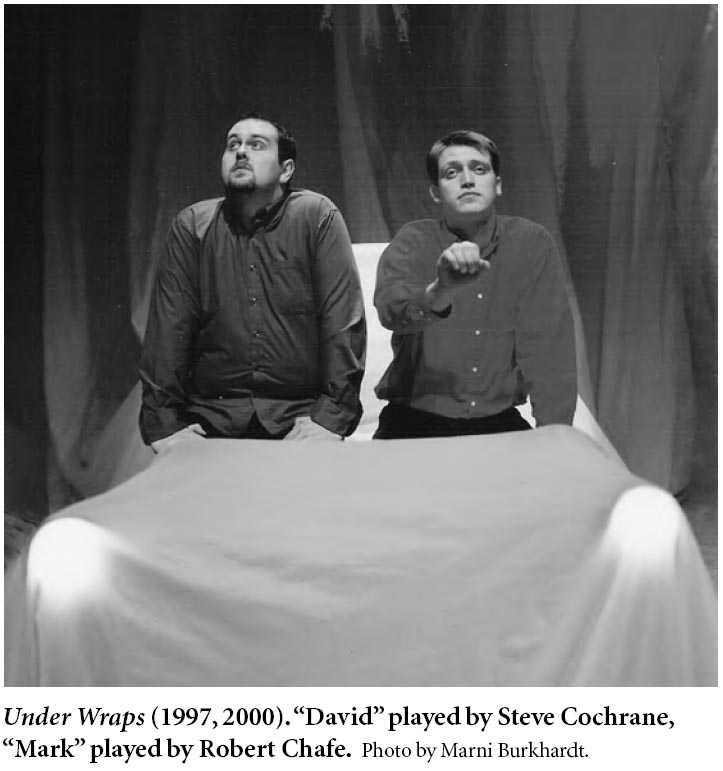
Display large image of Figure 10
R: The challenge was to integrate our timing system with text, grid blocking, music, lighting, and a full chorus.
J: Eighteen brave actors were to move around the set concealed by a 40 x 60 foot parachute cloth. These actors under the cloth were strictly choreographed to arrive and position themselves on precisely marked areas on the stage using a grid system.
J: The two actors on top of the sheet were also precisely directed and their blocking, like The Cheat [see Image 8], harmonized with the blocking of the actors under the cloth.
R: Well, myself and Steve, Steve Cochrane here, on top of the sheet couldn’t see exactly where they were under the sheet, and those under the sheet couldn’t see at all where we were, or even where the other chorus members were most times, so the timing of all the events on stage was critical.
Under Wraps (1997, 2000). "Mark" played by Robert Chafe. Photo by Marni Burkhardt.
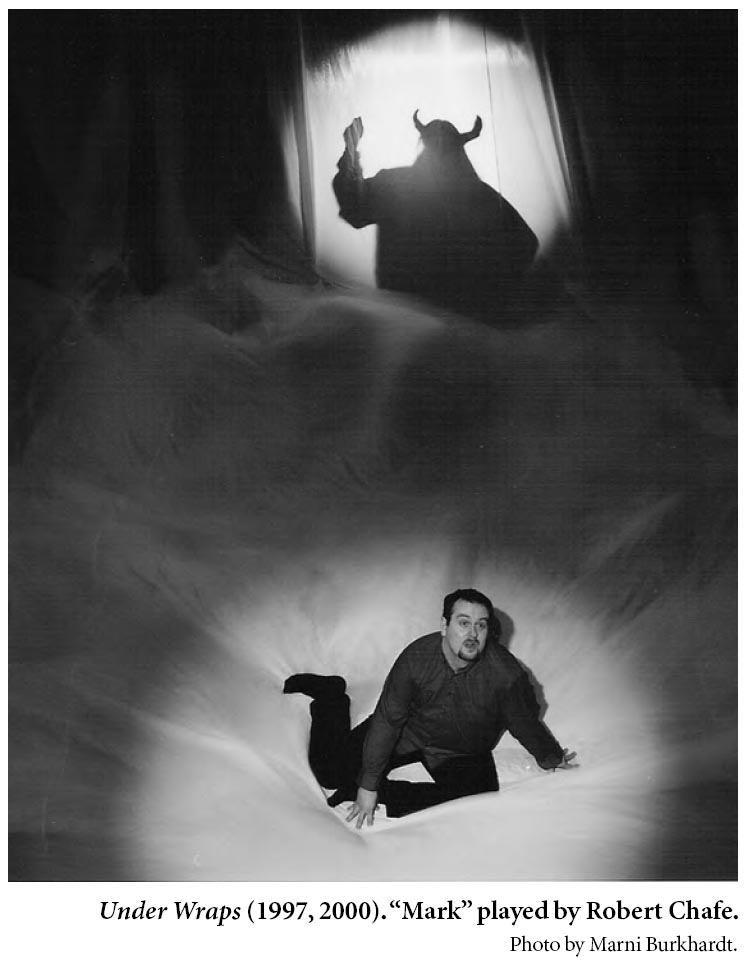
Display large image of Figure 11
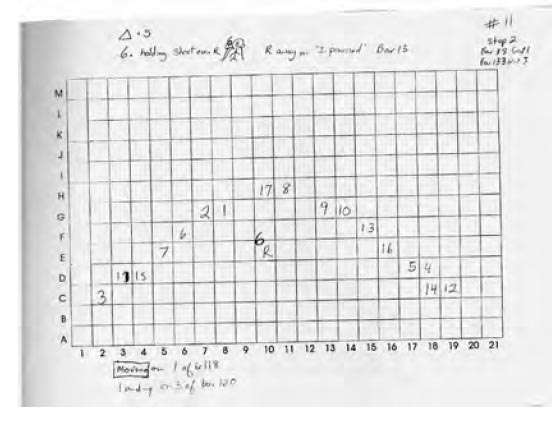
Display large image of Figure 12
Under Wraps (1997, 2000). "David" played by Steve Cochrane, "Mark" played by Robert Chafe. Photo by Marni Burkhardt.
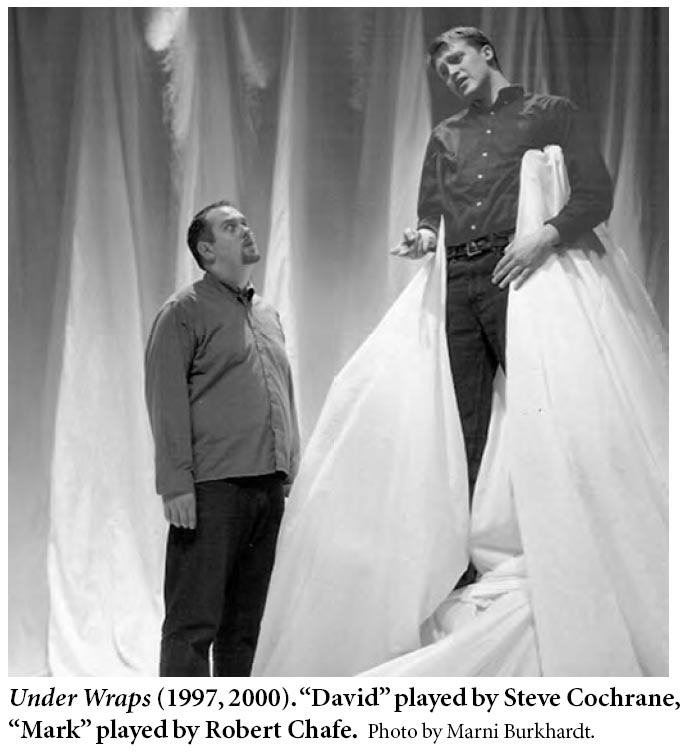
Display large image of Figure 13
R: We learned how to integrate our chorus so that the speaking actors could have natural sounding dialogue with a group that was singing the other half of the conversation.
J: We learned how to place text in the music, so the actor understood the exact timing and placement of each line, by working months before the rehearsal was on its feet learning the lines to a click track.
Score for Under Wraps (1997). by Petrina Bromley.
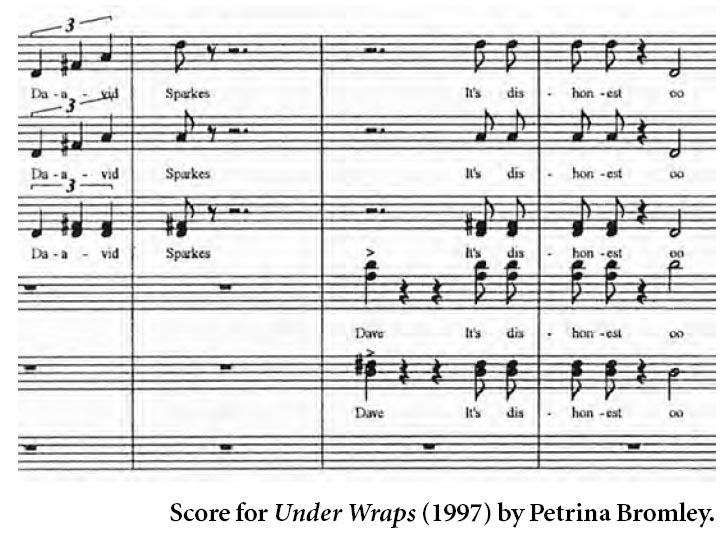
Display large image of Figure 14
J: Under Wraps opened in February of 1997 in St. John’s, and toured to Halifax, Calgary, Banff, and Vancouver.